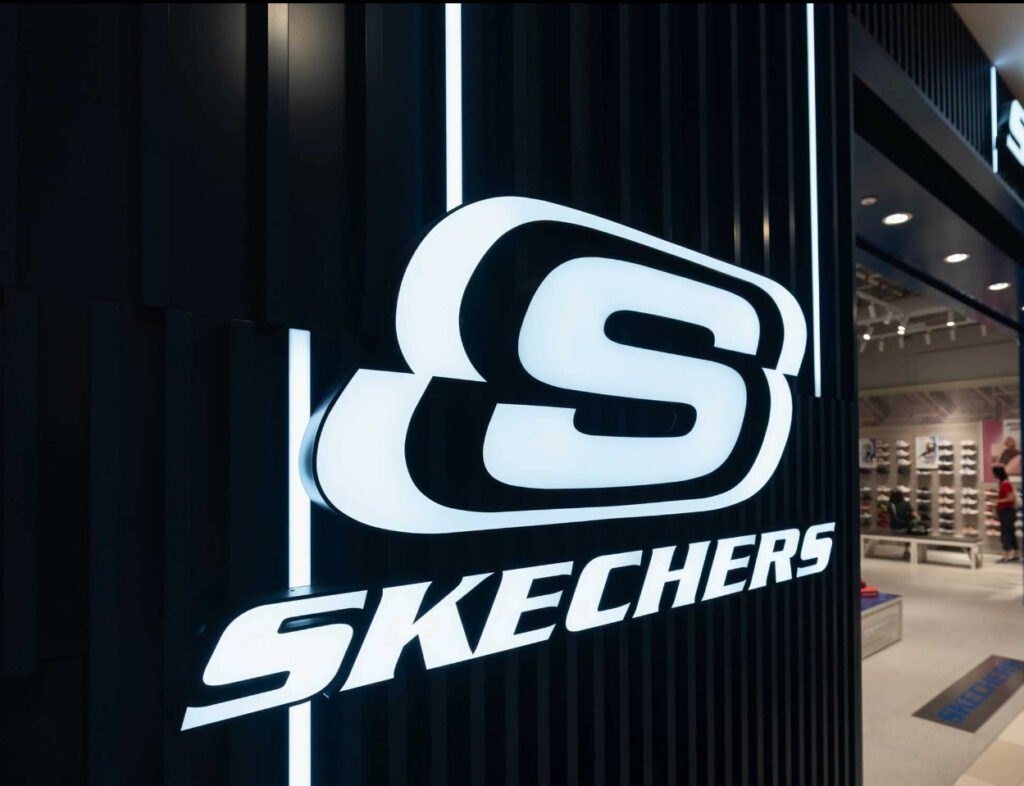In a move that underscores the shifting dynamics of global consumer brands and the aggressive ambitions of private capital, Skechers—the unassuming juggernaut of light-up sneakers, memory foam comfort, and pickleball-ready soles—is going private. Private equity firm 3G Capital has announced it will acquire the entirety of Skechers in a $9.4 billion deal, representing a 30% premium on the company’s public market valuation. For a brand once pigeonholed as the quirky underdog of the American sneaker market, this is a definitive reclassification: Skechers is now a serious target for strategic transformation.
Founded in 1992 by father-son duo Robert and Michael Greenberg, Skechers has long operated on a different wavelength than its competitors. It eschewed the sneakerhead cultism of Nike, the retro rebirths of adidas, and the high-performance credibility of ASICS, choosing instead to saturate the middle with mass appeal, relentless comfort, and often a wink of absurdity. And yet, the numbers speak. Skechers has grown into a global brand, generating over $8 billion in annual sales, with products spanning toddlers to seniors, style to function, leisure to athletics.
The $9.4 billion deal will see Skechers delisted from the New York Stock Exchange, ending a 25-year run as a public company. The Greenbergs, however, are staying put. Both Robert (CEO) and Michael (President) will retain leadership, as will Chief Operating Officer David Weinberg. The deal, in other words, is not a handoff. It is a strategic pivot—one that could reshape the brand’s trajectory in ways both evolutionary and existential.
From Grunge Boots to Pickleball Soles: The Oddball Rise of Skechers
Skechers began life as a response to a moment—specifically, the grunge-fueled fashion wave of the early 1990s. Its first major product, a chunky utility boot, bore more resemblance to Doc Martens than to anything performance-related. But the company found early success by tapping into subcultural footwear niches that the giants of the era overlooked.
Through the late ’90s and early 2000s, Skechers matured into a family footwear brand with broad accessibility and a penchant for gimmicks—light-up shoes, memory foam insoles, cartoonish collaborations. Unlike Nike, Skechers didn’t chase athletes; it chased the consumer aisle at Kohl’s. Unlike adidas, it didn’t build legacy through sport; it built comfort across the board. This strategy, long mocked by high-fashion purists and sneaker elitists, proved effective—especially as American consumers leaned into comfort, affordability, and brand neutrality.
The brand’s rise wasn’t aesthetic. It was logistical. Skechers mastered scale, distribution, and market saturation. It grew not because it became cool—but because it became everywhere.
Why 3G Capital? Why Now?
The Brazilian-American investment firm 3G Capital is no stranger to high-profile acquisitions. Known for its stakes in Anheuser-Busch InBev, Kraft Heinz, and Burger King, 3G has a reputation for operational austerity, aggressive streamlining, and long-term brand reshaping. In Skechers, 3G is not acquiring trend—but infrastructure. It’s acquiring real estate, product pipelines, overseas manufacturing relationships, and one of the most robust international distribution systems in footwear retail.
It is also buying into a brand with a highly diversified consumer base. Unlike hype-driven sneaker brands that depend on product cycles and resale market heat, Skechers sells broadly and steadily. Children, nurses, warehouse workers, retirees, recreational athletes, and style-agnostic dads all buy Skechers—for different reasons, in different styles, at different price points.
This multi-channel relevance gives 3G a base to build on, restructure, and potentially take global in new ways. According to FactSet, 66% of Skechers’ revenue comes from outside the U.S., and China alone accounts for 15%. In a market increasingly shaped by tariff policies, political volatility, and shifting production centers, Skechers’ international composition is both a risk and an opportunity.
And yet, notably, 3G’s announcement made no mention of tariffs or supply chain risk. This silence may indicate either confidence in the company’s existing resilience—or a strategic ambiguity as negotiations evolve in the background.
What Does Going Private Really Mean?
Going private liberates a company from quarterly earnings pressure, public scrutiny, and shareholder expectations. For Skechers, this means operational experimentation without investor panic. It also means potential cost-cutting, supply chain redesigns, and product reshaping away from the public eye.
Private equity doesn’t buy brands out of sentiment. It buys them to transform, to scale, and eventually to resell or relist. For 3G, the goal may be a leaner, higher-margin Skechers in five years—repackaged for IPO 2.0 or sold to a strategic giant in retail or luxury.
There may be growing pains. PE firms like 3G are known for ruthless efficiency plays—cutting “non-essential” spending, reducing workforce redundancies, and selling off underperforming segments. Skechers, which has historically functioned as a maximalist brand—offering thousands of SKUs, marketing to dozens of demographics—may be forced to contract its offerings in the name of focus.
Will Skechers retain its goofy charm and over-the-top product lines (like shape-ups, glow-in-the-dark soles, or the infamous “energy lights”)? Or will 3G streamline the brand into a more minimal, efficiency-driven enterprise?
The Greenbergs Remain: Succession or Survival?
That Robert and Michael Greenberg will remain at the helm post-acquisition is telling. Unlike other PE takeovers that install new leadership to execute strategy, 3G appears to view the Greenbergs not as relics, but as assets. Their deep understanding of the Skechers consumer and their history of weathering industry upheaval is likely seen as vital in a market that continues to shift dramatically.
Robert Greenberg, now in his 80s, founded L.A. Gear before launching Skechers. His marketing instincts—mixing youth trends with family-market saturation—are unconventional but effective. Michael Greenberg has handled branding, licensing, and celebrity deals, helping land the likes of Tony Romo, Brooke Burke, and, more recently, pickleball endorsements that captured America’s latest sports obsession.
Yet the real question isn’t whether the Greenbergs will remain. It’s whether their vision can evolve fast enough within a private-equity framework designed for acceleration. Will they be granted space to operate? Or will they be nudged toward an eventual exit?
The Bigger Picture: A Footwear Industry in Flux
The Skechers buyout is not an isolated story. It fits into a broader narrative of consolidation, privatization, and disruption across the apparel and footwear sectors.
Nike is investing in direct-to-consumer infrastructure. adidas is shedding assets and recalibrating post-Yeezy. Reebok has found new life under Authentic Brands Group. On the luxury end, LVMH and Kering are investing in footwear because of its profitability and cultural cachet. Even New Balance has shaken off its dad-shoe image to become a Gen Z darling through savvy design and collaboration strategy.
In this ecosystem, Skechers occupies a unique position: a brand not driven by fashion, but by reach. In a way, Skechers is the Costco of footwear—a high-volume, global, cash-rich company with low cultural capital but enormous retail clout. That kind of company, under private ownership, can either evolve into a dominant force—or collapse under the pressure of reinvention.
3G Capital knows this. And they know that in a post-pandemic world where consumers prize comfort and function more than flash, Skechers may be perfectly timed for a comeback—albeit one shaped by new values, new costs, and new pressures.
The China Factor, the Tariff Trap, and the Global Risk Map
With 15% of its revenue coming from China, Skechers is exposed to the unpredictable terrain of U.S.–China trade relations. Tariff hikes, production slowdowns, and geopolitical tensions could destabilize its supply chain. But Skechers’ global spread also acts as a hedge. Its presence in Latin America, Europe, and the Middle East allows for distribution rerouting and market pivoting.
3G may invest heavily in nearshoring—moving factories closer to U.S. borders—or diversify sourcing to Vietnam, Indonesia, and India. These moves would improve both PR optics and long-term operational efficiency, especially if U.S. policy turns increasingly protectionist.
But doing so requires significant upfront investment—something a public company might struggle to justify in quarterly terms, and something a private firm like 3G can execute behind closed doors.
Impression
The $9.4 billion privatization of Skechers is not merely a business deal. It’s the culmination of three decades of oddball resilience, dad-shoe defiance, and underdog strategy. It is also the beginning of something far more calculated. For 3G, Skechers is a case study in untapped potential—a brand with global footprint and infrastructural depth but low luxury perception. A brand with mass reach but limited brand equity. A brand ripe for revision.
What comes next may surprise us. A design overhaul. A deeper push into performance. A luxury diffusion line? Or maybe just the same old Skechers, but on tighter margins and with faster logistics.
Either way, the days of Skechers as a chaotic, family-run public company are over. The private era has begun.
And one way or another, the next step will leave a mark.
No comments yet.







